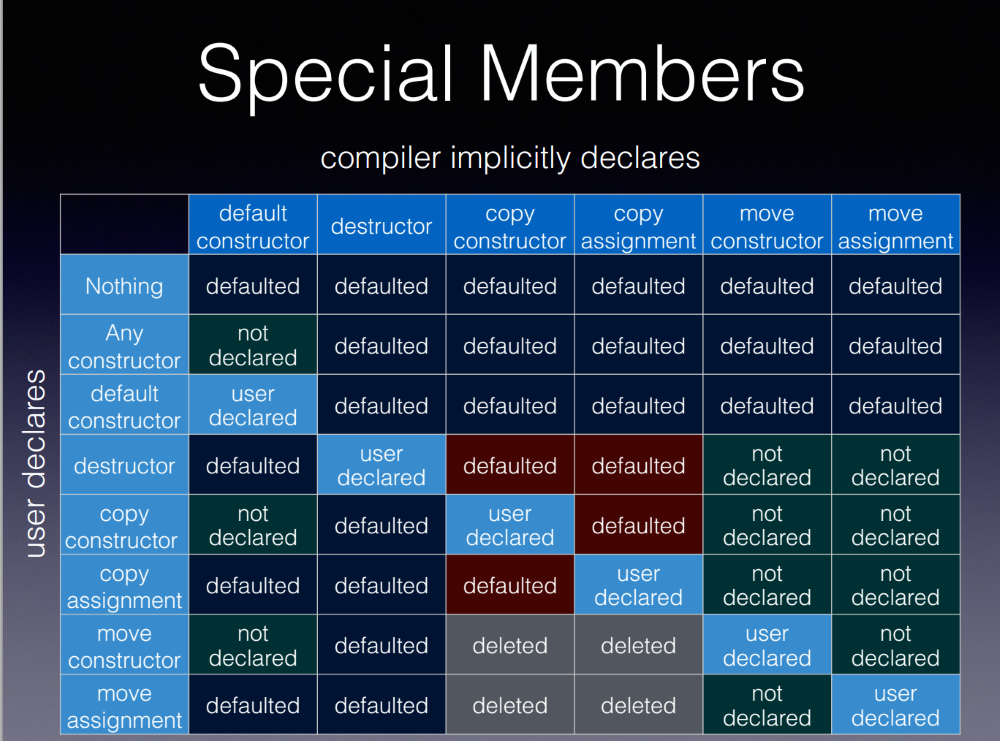大体的规则

以上都是用户自定义了某个特殊成员函数之后,编译器会不会自动生成其他特殊成员函数的规则。
删除了拷贝构造就不会生成移动构造2
If the definition of a class X does not explicitly declare a move constructor, one will be implicitly declared as defaulted if and only if
— X does not have a user-declared copy constructor,
— X does not have a user-declared copy assignment operator,
— X does not have a user-declared move assignment operator, and
— X does not have a user-declared destructor.
注意看第一条 X does not have a user-declared copy constructor
根据参考资料2的第二个回答对 user-declared 的解释,删除的函数也算是用户自定义的函数。
Note the user-declared. But if you look at §8.4.3:
A function definition of the form:
attribute-specifier-seqopt decl-specifier-seqopt declarator virt-specifier-seqopt = delete ;
is called a deleted definition. A function with a deleted definition is also called a deleted function.
A program that refers to a deleted function implicitly or explicitly, other than to declare it, is ill-formed.
So the standard defines deleted functions as user-declared
带有 unique_ptr 的类会删除拷贝构造3
因为 unique_ptr 不能拷贝,所以编译器会删除拷贝构造函数。